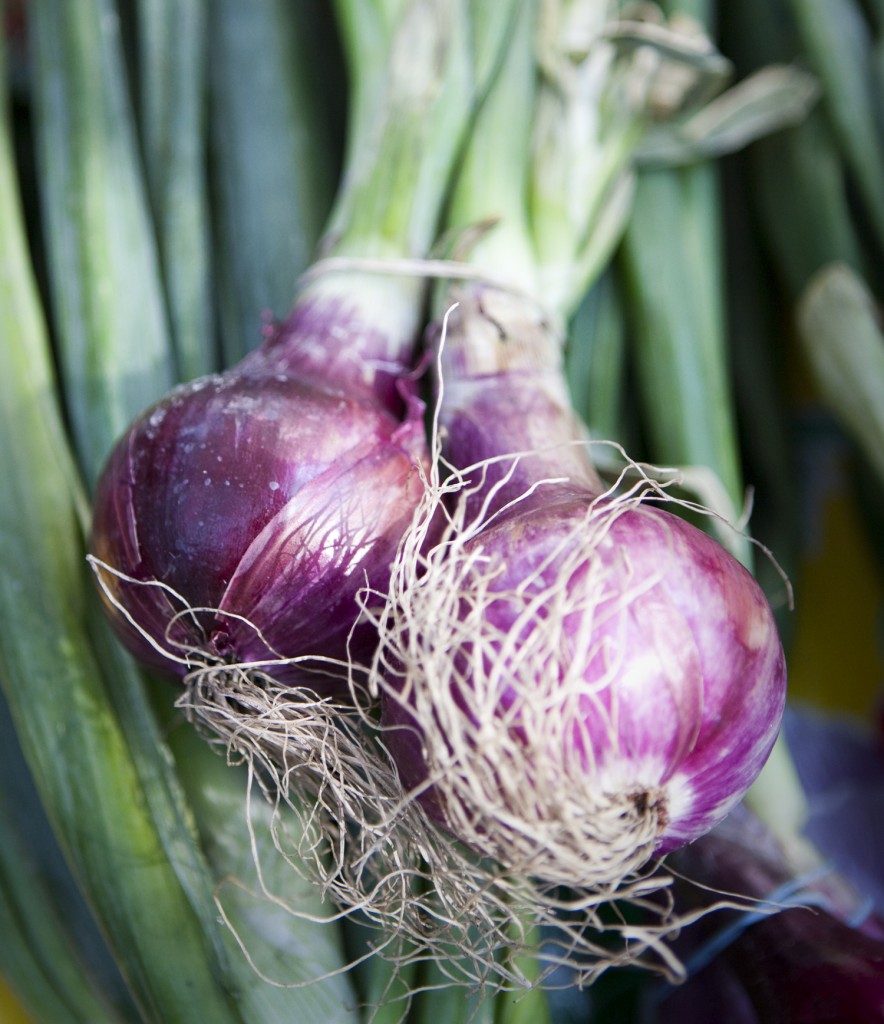 (image)
(image)
I think onions are the best part of a many a winter meal. Slow cooked and caramelized with a pot roast, all soft and soaked with juices. Crisped over green beans, a crunch of sweet and savor. And then there’s french onion soup, maybe the pinnacle of winter comfort.
You can buy bags of onions at the store for pretty darn cheap, so if you’re going to grow them on your own it’s not to save a buck. And it’s not really because they’re pretty either. They can flower, of course, but it’s a sign of panic at unfavorable conditions (typically hot temperatures) and best met with immediate trimming to keep the underground onion bulb growing. And aside from the flower you really have nothing but unlovely greens at wide intervals. So why grow them then? Because you can, is one reason. They’re not that hard, and there’s the simple satisfaction of it. But another reason is variety. At the store you can buy yellow or white or red onions. If you’re growing your own, you have options like Pearl Drops, Ebenezers, or Red Zeppelins, to name just a few — infinitely more charming.
If you decide to go for it, there are three important things you should know.
- Short Day vs. Long Day. Onions are divided into two major categories: short day and long day. Short day onions form their bulbs (which become the flesh you’ll eat later) when the sun shines about twelve hours a day. Long day onions form their bulbs when the sun shines more like fifteen hours a day. If you live in a wintry state, you’ll need to grow a long day variety, otherwise your onions will form bulbs too early in the season, when the plants are too little to sustain them, and you’ll end up with a piddly diddle kind of crop. So look for that when you’re picking your seeds, not just for a pretty name.
- A Lengthy Season. Onions need a nice long growing season. If you plant them in March or April, they’ll be ready for a late summer/early fall harvest. And if you’re a procrastinator like me and you think you can put them in a little later and then just harvest them a little later, forget about it. They do their best growing when the weather is cool, so you need to get them in the soil early, so they’ll be the right size when that magical “long day” sunlight comes along.
- Curing. Unless you plan to eat the onions immediately, you’ll need to cure them, which means leaving them to air dry with their tops on. They need plenty of air circulation and two to three weeks to thoroughly dry. If finding space for onions to dry for weeks on end in your apartment sounds a bit nuts, revert back to that first sentence about eating them immediately — not such a bad idea!
Other than that, onions like what most vegetables like. Water, sun, and nice, fertile soil. Plant them early, then watch and wait. I’m rabbit-earing the shallot pages in my seed catalogs this winter!
Hello! Love your page.
I have looked and looked for a “organic” Red Zeppelin onion and find nothing. Any ideas?